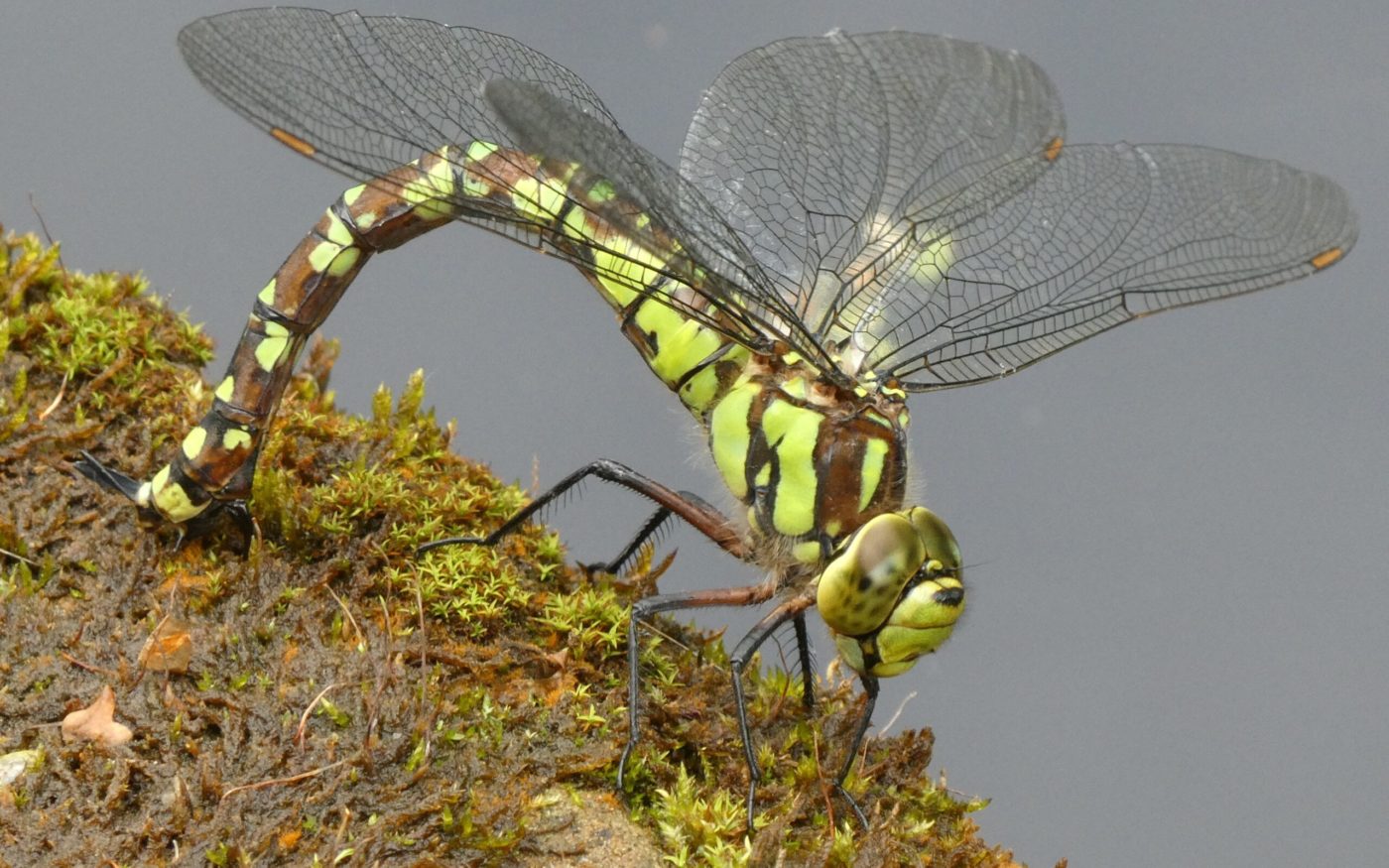Order
Dragonflies and damselflies
Family
Aeshnidae (also known as Hawkers)
The Southern Hawker dragonfly is an inquisitive species, which occasionally approaches people. The Hawker family contains the largest dragonflies in Europe and North America, as well as some of the largest dragonflies on the planet. Out of the 36 species of dragonfly that live in the UK, 12 belong to the Aeshnidae family.
What do they look like?
Southern Hawker dragonflies can be as long as 70 millimetres and have a wingspan of up to 110 millimetres. The males are dark with bright blue and green markings, and have blue or greenish-blue eyes. There have been males recorded that only have blue markings, but these are rare. The female dragonflies are brown with bright green markings and have brown or yellow-green eyes.
Where do they live?
Southern Hawkers can be found around ponds, canals, and lakes in the lowlands. They prefer non-acidic waters, often breeding in bodies of water lined with lots of vegetation. The adults hunt well away from water and can be found searching for prey in woodlands.
Where can they be found?
Southern Hawkers are common throughout England and Wales, and are slowly spreading into Scotland.
When can you see them?
Adults can be seen in flight from June to October, and occasionally in May and November.
Life cycle
From June to October, the males aggressively defend their hunting and breeding grounds against other males. Once they have successfully mated, the females lay their eggs (oviposit) on the edge of still or slow flowing water, often in rotting wood or other vegetation. Nymphs then hatch out of the egg and spend two to three years in the water developing into an adult, during this time, the nymphs feed on small tadpoles, aquatic insects, and small fish. After the two to three year period, nymphs will climb up vegetation that sticks out of the water and shed their skin. This change turns the nymphs into adults and gives them their wings and final colouration. This often occurs from June to late July.
What do they do?
Adult dragonflies feed on various flying insects such as flies, mosquitoes, and midges, catching them mid air using their expert flying skills and incredible eyesight. Nymphs feed on midge and mosquito larvae, which helps to control their populations and stop them from overpopulation certain areas.
Did you know?
Dragonfly nymphs catch their prey by shooting out the whole of their bottom jaw and grabbing onto their prey.

